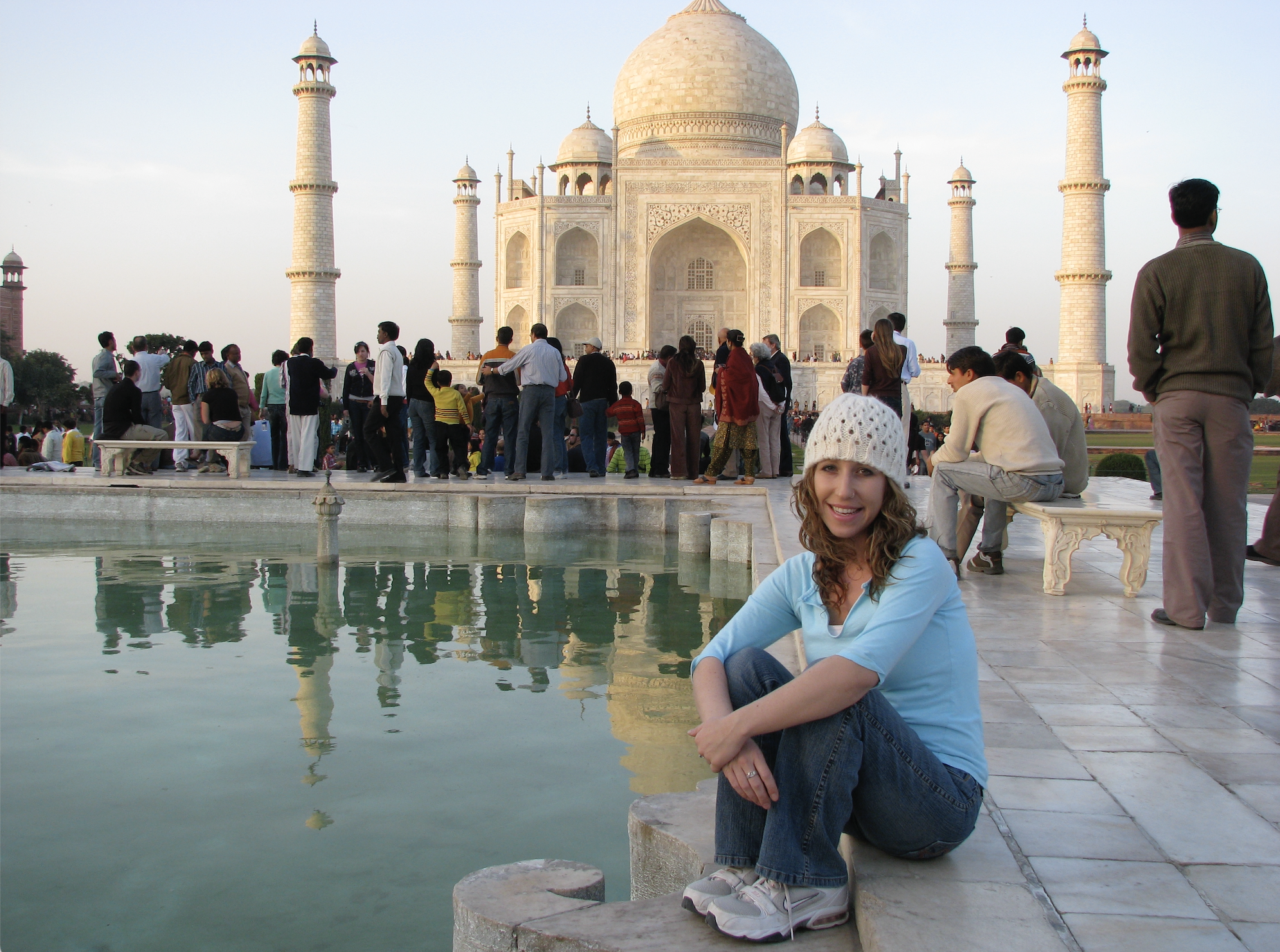A Life-Threatening Disease Took Me to the Place I Least Expected
By Amy B. Scher
Take me home, take me home, take me home. Those were the words that raced through my head upon my arrival at the airport in New Delhi, India, with its blinding lights, honking horns, and stench of gasoline. Sitting in my wheelchair, frozen in fear, and with my culture-shocked parents by my side, everything in my body revolted. But I knew I had to be there. Because every time I looked into my parents’ sad eyes, I saw a reflection of their dying daughter. And it was up to me to save her.
Only two years earlier, I was deliriously happy. I had my dream job as a marketing manager at Harley-Davidson, a loving boyfriend, and there was always a happy hour to attend. I had dreams of traveling to Fiji, buying a country house, and rescuing as many dogs as it could hold.
Now, my modest life goals felt insurmountable: Wash my own hair. Be able to eat everything. Be able to eat (anything?). Live to see my 28th birthday.
The reality of my life: I was in excruciating pain almost 24 hours a day. I needed help getting out of bed. Taking a shower could wear me out for days. I tripped often due to brain lesions that threw me off balance. My blood counts were so low that the common cold could land me in the hospital. After a string of misdiagnoses, doctors eventually found the cause: late-stage Lyme disease, contracted from a tiny tick in my idyllic hometown in Southern California.
My body was falling apart, and even with the best doctors on my team, I’d been unsuccessful in putting it back together. As my friends popped champagne to celebrate work promotions and their first homes, my entire life had been reduced to the back bedroom of my parents’ house. I missed out on milestones and lived life of a different kind: 44 pills a day, bone marrow biopsies, endless IV infusions, crazy diet cures, and an appointment with a medical medium (um, okay, more than one, but who’s counting?).
“It will either kill you or cure you,” my doctor said as I unfolded the pages I’d printed about a tiny hospital in New Delhi, India. The clinic offered an experimental treatment—a stem-cell therapy not yet available in the U.S., which had the potential to rebuild my deteriorated body.
When I told my parents that I wanted to go to India, they said, “If you’re going, we’re going too.” And then, “India? It’s so far.” It was a fair point. How would I survive a 16-hour flight and two months in a foreign land when I rarely left the house and had never even tasted Indian food? But the answer was simple: I had tried everything; except this treatment, in this country.
Kill me or cure me, I just wanted it to do one or the other. I had to go. If I didn’t move the goalposts for my own life, who would? I wanted not only to stay alive, but to feel alive, to lead a life. I was more afraid of living in my condition forever than dying from it.
Some people dream of visiting India for the Taj Mahal, the markets, and the vibrant colors. But for me, this wasn’t going to be Eat Pray Love. There would be no hilarious travel tales, no spiritual awakenings, and absolutely no epic love story to come home with.
My body was falling apart, and even with the best doctors on my team, I’d been unsuccessful in putting it back together.
Through the first weeks of rigorous treatment and grueling physical therapy, I fought not to give up. Every day, I endured IVs, intramuscular shots, physical therapy to retrain my muscles, and lots of waiting for the stem cells to do their work. My symptoms seemed to flare with searing pain in every inch of my body, and I had no idea if the treatment was killing me. Had I made the biggest mistake of my life—one that would cost me my life?
Instead of turning back, I focused on the rhythm of Hindi music bursting through the hospital’s speakers as my mom stood by with Kleenex and jars of peanut butter—comforts from home I devoured until I could hopefully learn to acclimate to the heat of Indian food and stop bawling all day long.
As the weeks passed, the tears began to dry ever so slowly and the treatment began to work. I became slightly more stable on my feet; I was less out of breath when I exerted myself; I reached for my painkillers less often. And for the first time since I'd been sick, I looked in the mirror at a person who seemed like she might be getting well, not only in body, but in spirit.
Eventually, I regained enough strength and balance to go beyond the hospital walls, and to experience a different kind of healing: My hopes were becoming real—I was starting to live. From the Ayurvedic massage where I had to endure the sound of my thighs slapping against each other, to road trips where goats wearing sweaters and jewels whizzed by the rickshaw window, the experience became the epic family vacation none of us could have imagined. Our biggest adventure was to the Taj Mahal—with its endless stunning marble, insane crowds, and parrots perched in the trees. I cautiously marveled as I witnessed my parents enjoy the simple pleasures of being out in the world with their daughter.
In India, everything about my life had transformed: My mom and I got our noses pierced, tried every kind of street food, watched parades full of elephants, and most unexpectedly of all—I fell in love with a British woman who’d come to visit her mom, another patient at the hospital. It was as if the universe was laughing in my face in the best possible way. I imagined a lot of things happening on that trip, but never did I imagine romance. Charlotte and I sent our love across oceans when we had to go separate ways after India, talking every single day until we finally met halfway for a week to see if what we felt in India was something we could make work. And indeed it was. (Spoiler alert: we got married and now live happily ever after in the very same country, city, and house).
Toward the end of my time in India, it became clear: I had not gone there to die. While the treatment doesn’t work for everyone and has inherent risks—something I only pursued because it was a last resort—it kickstarted my healing journey in a profound way. I’d never felt closer to the chance at a new life.
When I returned home, a roller coaster of emotions and a devastating relapse awaited me. But this led me further on my journey, and to the discovery of the mind-body connection for true and complete healing. While the treatment had repaired my body, I still had some work to do. As a people-pleaser, perfectionist, and someone who often sacrificed my own boundaries for others, it took time to figure out how to care for myself in meaningful ways.
I learned about how emotions, trauma, and unhealthy patterns contribute to illness and health. Attempting to heal the physical body without healing my inner self was a myopic approach. In light of this revelation, I put the final pieces together that would cure me for good. It's been over a decade since that grim period when every day seemed questionable, and I wondered if I'd survive. I now lead a blissfully healthy and adjusted life. I am well. I couldn’t have imagined while I was deep in the valleys of illness and despair that, one day, the entire picture would become so unmistakably clear: Sometimes we must travel to places we’d least expect or desire in order to discover what we need the most.
++
Amy B. Scher is the bestselling author of the This Is How I Save My Life and three other books on living and healing. Her work has been translated in over 20 languages and featured in The Washington Post, Oprah Daily, Good Morning America, and CBS. She lives in New York City with her wife and their bad cat. www.amybscher.com


